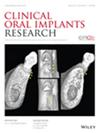For over three decades, digital technologies have been used in Implant Dentistry, beginning with the introduction of planning software for Static Computer-Assisted Implant Surgery (S-CAIS). During this time, this field has witnessed the emergence of diverse methodologies and a proliferation of technological advancements. Today, S-CAIS is a widely adopted procedure for the placement of dental implants in both partially and fully edentulous patients, with Dynamic Computer-Assisted Surgery (D-CAIS) and Robotic-Assisted Implant Surgery (RAIS) rapidly gaining attention among dental professionals. The continuous advancements in this arena are not merely indicative of technological progress; they represent a steadfast dedication to refining precision, enhancing efficiency, and fostering innovation with the goal of optimizing patient outcomes in dental implantology.
The purpose of the following review is to meticulously examine the spectrum of digital technologies available and to describe their protocols, advantages, and shortcomings as well as to evaluate their accuracy in implant surgery in patients with complete edentulism.
A scoping review was performed following the Joanna Briggs Institute (JBI) protocols, leveraging the population, concept, and context (PCC) framework to construct the research question and determine the inclusion and exclusion criteria.
Two hundred and sixty-seven records were identified for screening. After applying all the screening criteria, 41 articles were included for review and qualitative data analysis.
S-CAIS, D-CAIS, and RAIS were identified as the main technologies for computer assisted implant surgery. Their applications, characteristics, protocols and levels of accuracy were compared and described.
Taking into consideration the limitations of this study, S-CAIS appears to be the most applied and validated technology in implant surgery for fully edentulous patients followed by D-CAIS and RAIS being these last two promising initiatives in the field. Despite having similar levels of accuracy, the overall comparison showed a slightly higher values in RAIS followed by D-CAIS and S-CAIS.


